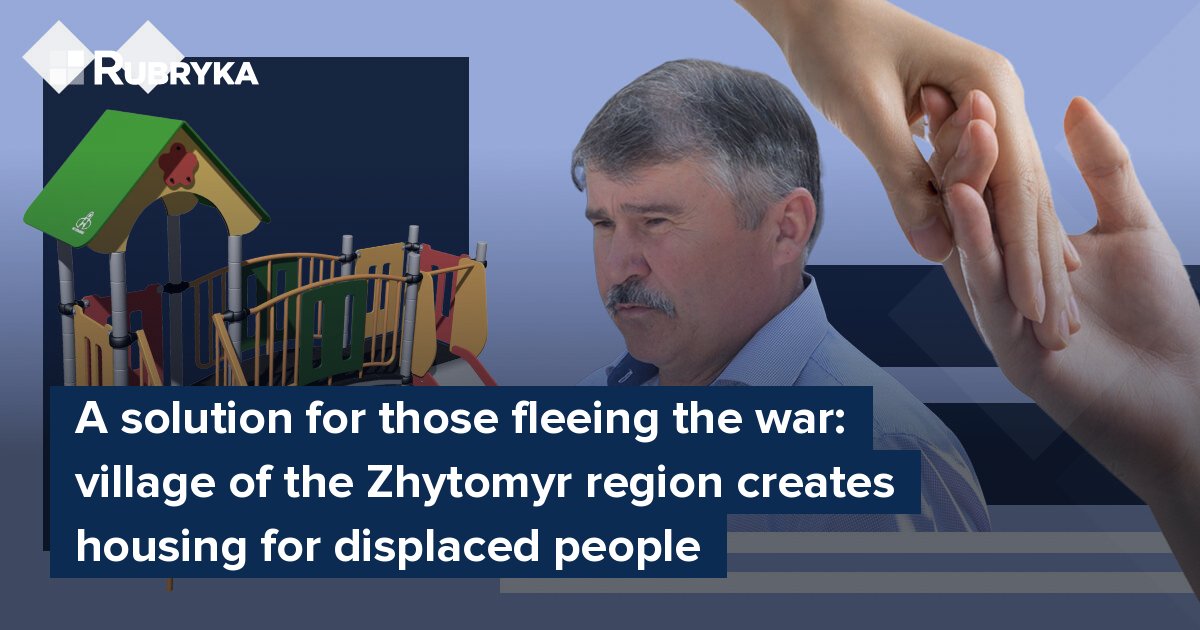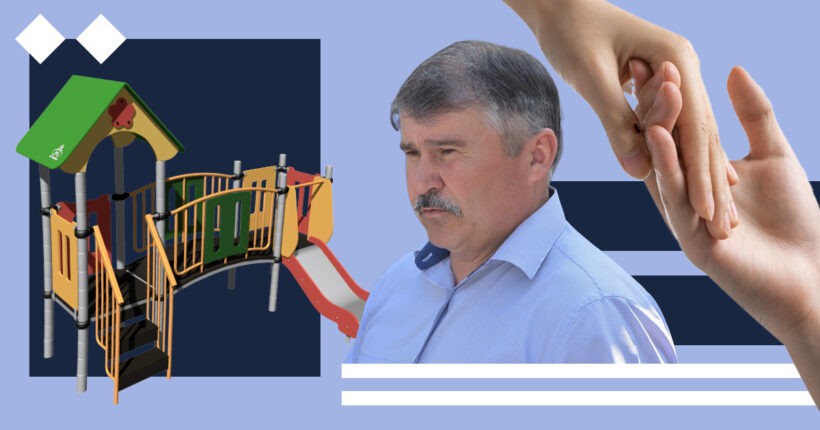
What is the problem?
"Don't you hear that they are shooting? The war has begun"
The story of Lyudmila Sanina, a teacher from the village of Dvorichna in the Kharkiv region, is one of hundreds of thousands of similar ones. On February 24, 2022, Sanina woke up from a rumble. She thought it was a neighbor moving furniture. Annoyed, she woke up to get ready for work in kindergarten. Just then, the mother of one of the pupils called and asked whether she should bring her kid to kindergarten. Sanina was surprised, but the pupil's mom replied with fear. "Don't you hear that they are shooting? The war has begun." Only then Sanina realized that she had woken up from distant explosions, not an annoying neighbor upstairs.
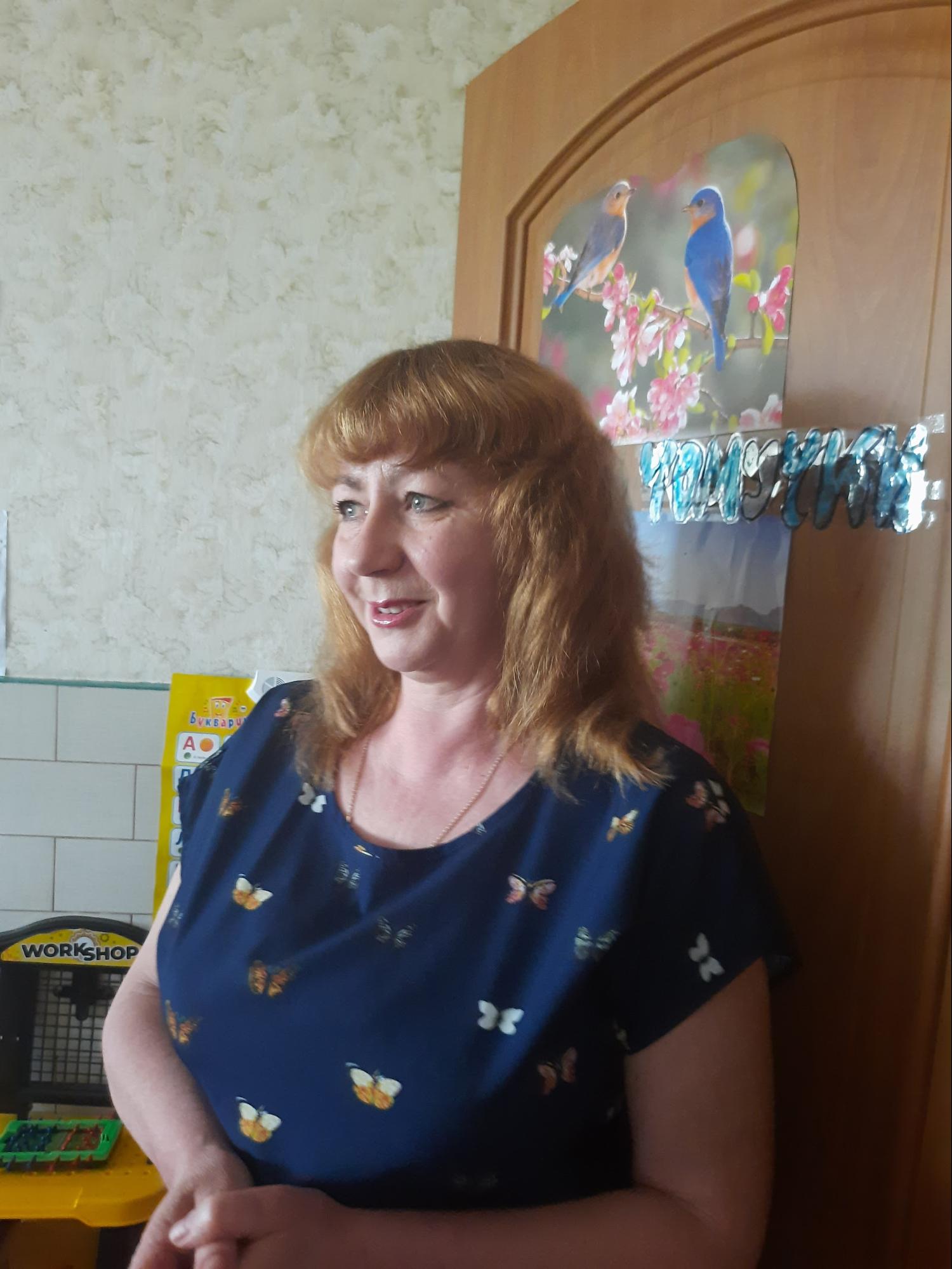
Lyudmila Sanina tells how she encountered a full-scale war
The first two days, according to Sanina, were quiet. Then the occupiers entered Dvorichna and set up their checkpoints. Columns of enemy vehicles began to pass by the village.
"There were thousands of them. I can't tell you how scary it was to watch. This was some kind of hell. I understood how much grief they bring to our poor Ukraine. You look at them and can't do anything," Sanina recalls.
In order not to see the onslaught of invaders, the teacher decided to go to her parents' house in the village of Hryanykivka. Once, while working in the garden, she saw a helicopter almost above her.
"I was so angry at it that the devil pulled me to show the pilot the middle finger. He turned and flew at me — tilted the rotorcraft and almost hit the roof. He went so low that I saw his face, showed me the machine gun, and flew away," Sanina shared with Rubryka. "I was no longer afraid. There was only hatred."
"If a herring used to cost 100 hryvnias, then it is 700-800"
Products from the occupied Luhansk region began to be brought into the occupied settlements, and the prices skyrocketed. They brought products from Luhansk, Svatovo, and Troitske. If the herring used to cost ₴100, then it became ₴800, and the sausage was up to a thousand per kilogram, Sanina recalls.
It was possible to leave the village only through Russia. However, Sanina did not want to enter the territory of an enemy country, even for a short time. Although the neighboring regions of the Russian Federation were familiar to her — she started her first job as a teacher there, her second husband's relatives lived there.
"I didn't want to drive even through the places where I studied and was assigned to work. I used to visit the Belgorod region all the time and felt comfortable. Now, I didn't even want to see their flag because it was so disgusting when it flew over these equipment columns," the teacher shared.
Sanina and the neighboring women became friends, supported each other, went fishing, and grew vegetables in the garden. An acquaintance who ran a butcher's shop occasionally gave the neighbors scraps of meat and lard. That's how they survived.
There was no reception, so Sanina, to be in touch with her son, had to go to Dvorichna to an acquaintance who had a modem. When the Ukrainian army was liberating the Kharkiv region, she just went to call her son, who was serving. The bridge across the river was blown up, so a friend took her by boat.
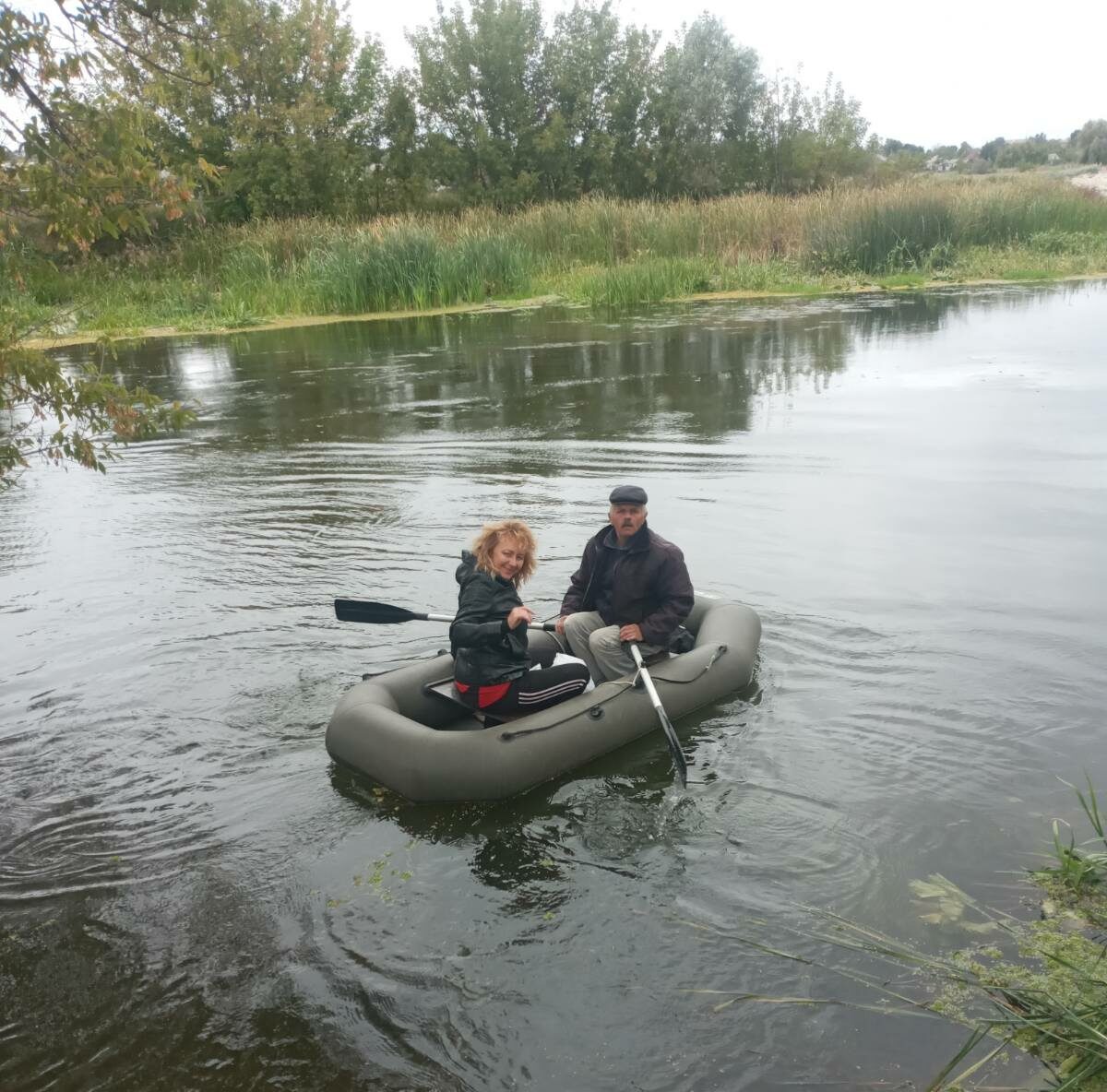
Sanina sails to another village by boat to contact her son
Sanina could not return to the village because heavy shelling began. For a while, they stayed at a friend's house in the basement, and the military told them to leave because it would be very loud, so several families left by car for Kharkiv, then Zhytomyr region.
They ran away, as they thought, for a couple of days until the Ukrainian army chased away the Russians. All things remained in Hryanykivka. There was no money; there was nothing. "It's good I had my passport and employment book with me," Sanina shares. She was forced to stay longer at the new place in the Zhytomyr region.
What is the solution?
In the village of Sokoliv, the Kurnenska community of the Zhytomyr region, housing was built for the compact accommodation of IDPs. The building of the former retirement house has become a shelter for displaced persons. That's where Sanina ended up.
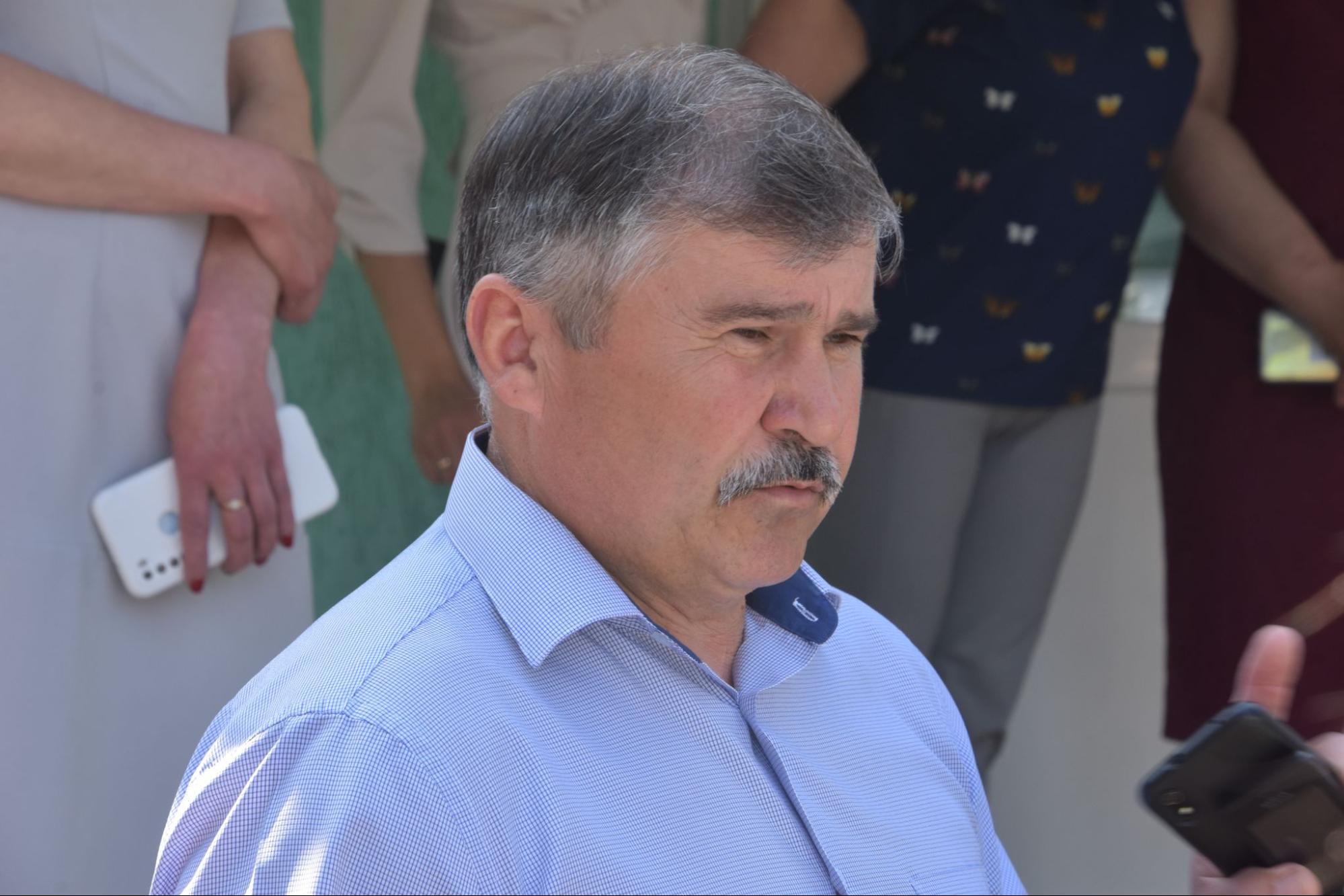
Leonid Korzun, the head of the Kurenska United Territorial Community
"We planned to make a shelter here for people who suffered from domestic violence and a social center for people who find themselves in difficult life circumstances," says Leonid Korzun, head of the Kurnenska united territorial community. Many parents in the village do not know how to do anything and misuse alcohol, so the local authorities planned to conduct training for them. "We started working in this direction, attracted foreign grants, and made repairs in one wing, but a full-scale invasion began, and we did not have time to completely finish the center. Now we accept internally displaced persons here," Korzun told Rubryka.
In general, foreign partners — the Representation of the Fund of International Solidarity in Ukraine helped the Kurnenska Village Council to create a shelter for displaced persons. The financial costs were covered thanks to the Polish Cooperation Program for the Development of the Ministry of Foreign Affairs of the Republic of Poland. The US Embassy in Ukraine also joined.
Svitlana Bokovenko, head of the department of economic development and investments of the Kurnenska community, says that the community received half a million grant funds in 2021 to arrange the premises. In addition, state subventions were attracted. After Russia's invasion, they have received help from various international funds, particularly generators, during the blackout period after Russia targeted Ukraine's energy infrastructure.
Alla Khalimovska, the head of the village of Sokoliv, says that since the first days of the full-scale war, people have settled there:
On February 26, the village already had people from Mariupol. The school and lyceum engaged in cooking food, and cooks brought ready-made dishes there — stewed potatoes and boiled dumplings. Entrepreneurs brought meat and sausages, and residents also brought what they could. However, people did not stay long — some lived for a month, some for three and left — some abroad, some to the western regions of Ukraine.
According to the head of the community, the premises can accommodate up to 50 people. At most 30 people lived there, now 12 remain, six of them children.
How does it work?
They planted a vegetable garden and baked pies
The local authorities started arranging the shelter — primary needs were covered independently, and then they began to look for financing. European partners allocated funds for the development of the initiative. The opportunity to provide housing for displaced persons and contribute to their adaptation in every possible way remains.
When we arrived at the shelter, in the yard along the freshly whitened curbs, the soil was dug up, and this year's strawberries were planted in even rows. The first berries are already starting to turn pink. The smell of home baking can be heard from the threshold — Sanina woke up at five in the morning and baked pies because she was waiting for journalists.
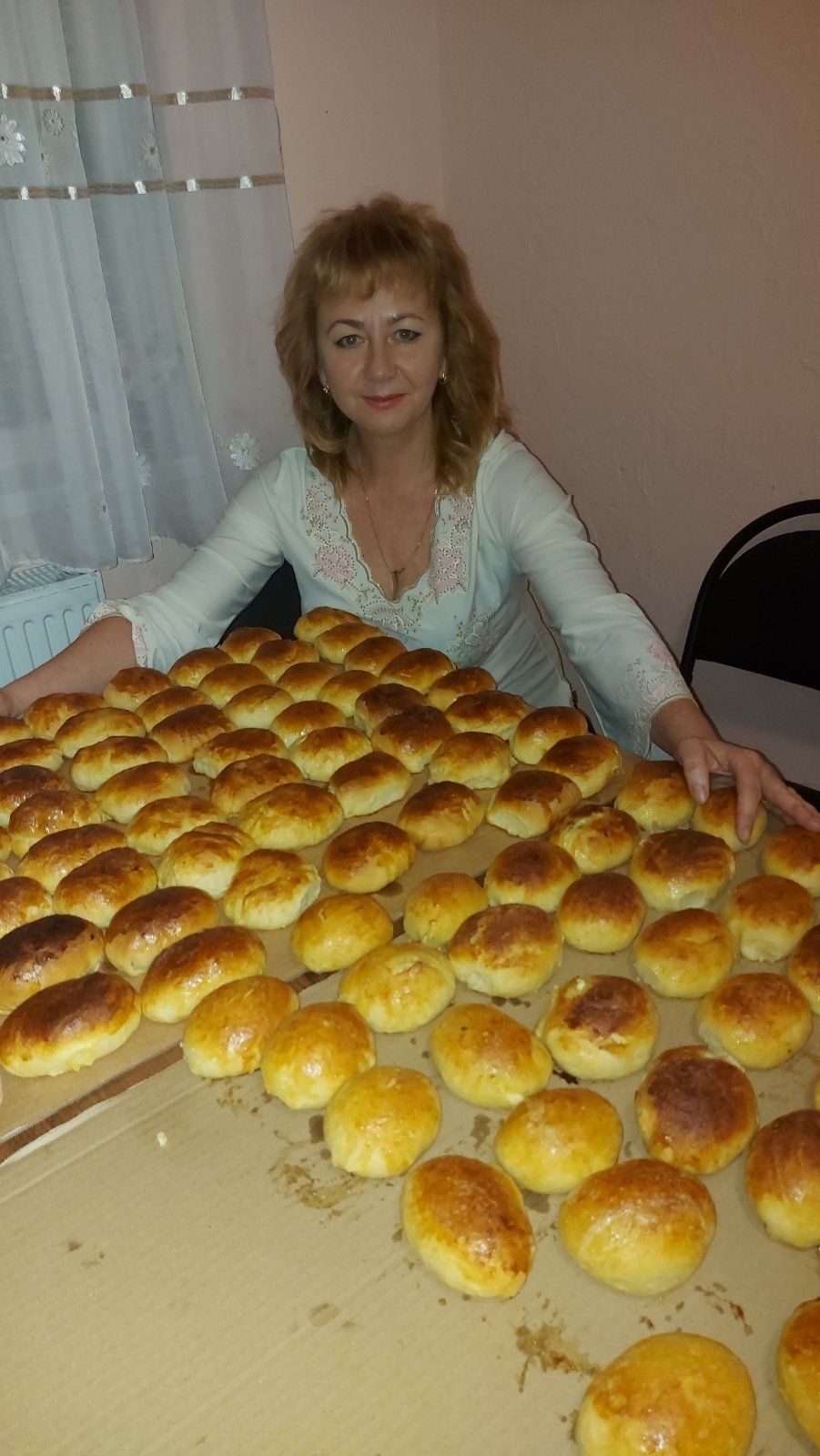
Lyudmila Sanina poses next to freshly baked pies
Each room has two beds, a wardrobe, and a chest of drawers. The kitchen has everything you need for cooking. There is a living room with a TV and soft sofas, a shower room, and a washing machine. The residents themselves equipped a playroom for children. Sanina, as a teacher, organizes leisure time for them.
"We mainly paint and glue. Children need their own space so that adults can also have the opportunity to rest, chat, and watch TV," Sanina shared with Rubryka.

The playroom for children gives parents a chance to have some rest
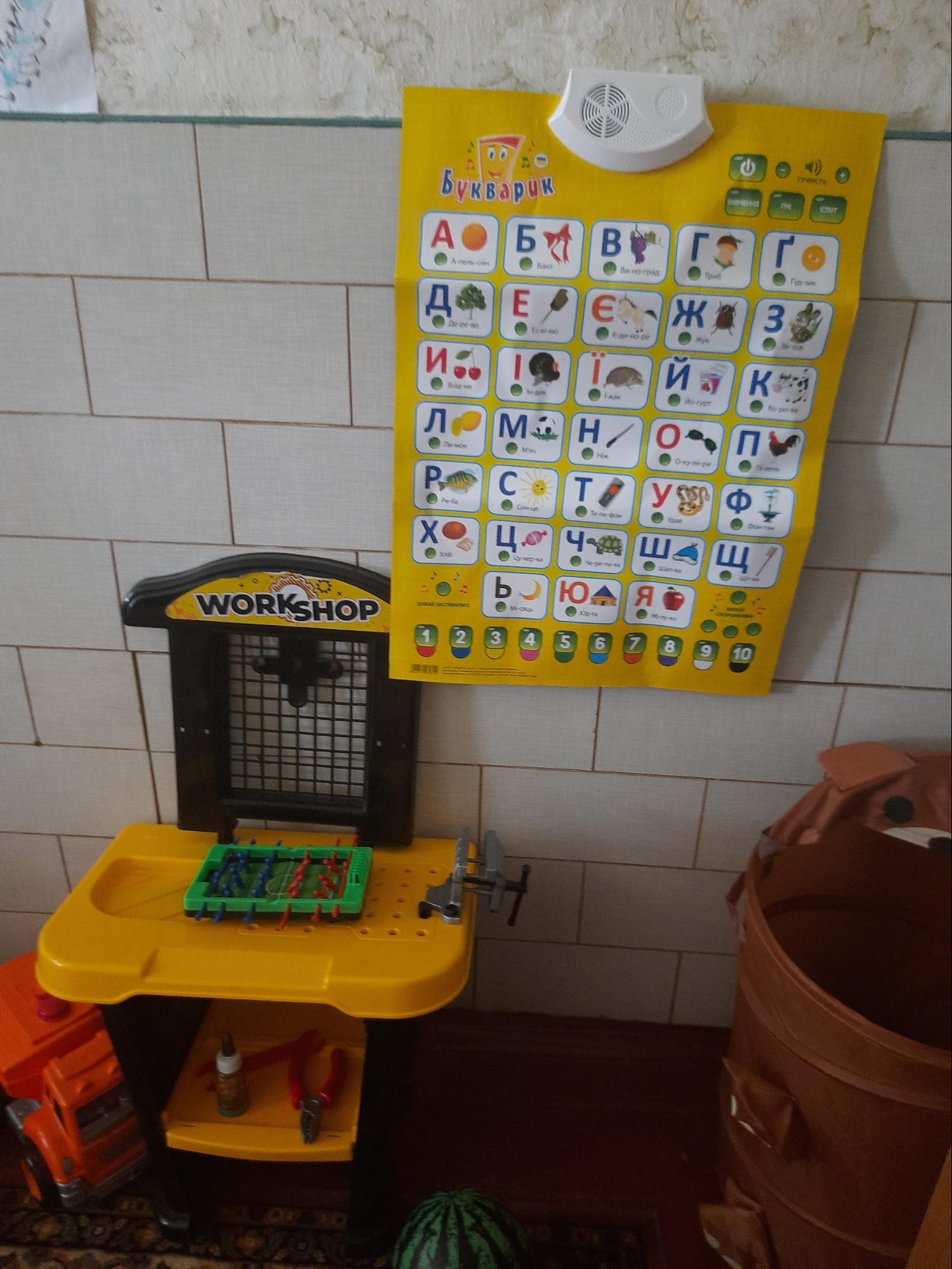
The game room that was equipped in the shelter
In the fall, the shelter's residents went to pick mushrooms together; in the winter, on the weekends, they engaged in baking, involving children in this activity, and in the spring, they planted a garden with vegetables. The land was previously sown for the needs of the inpatient department of the shelter for the elderly.
"I offered them, and they agreed," says the village head. Director of the farm Oleksii Yatsenko brought seeds of onions, carrots, beets, and lettuce; the villagers also helped with seeds and sowed the vegetable garden — now the residents already have their own greens, radishes, and strawberries.
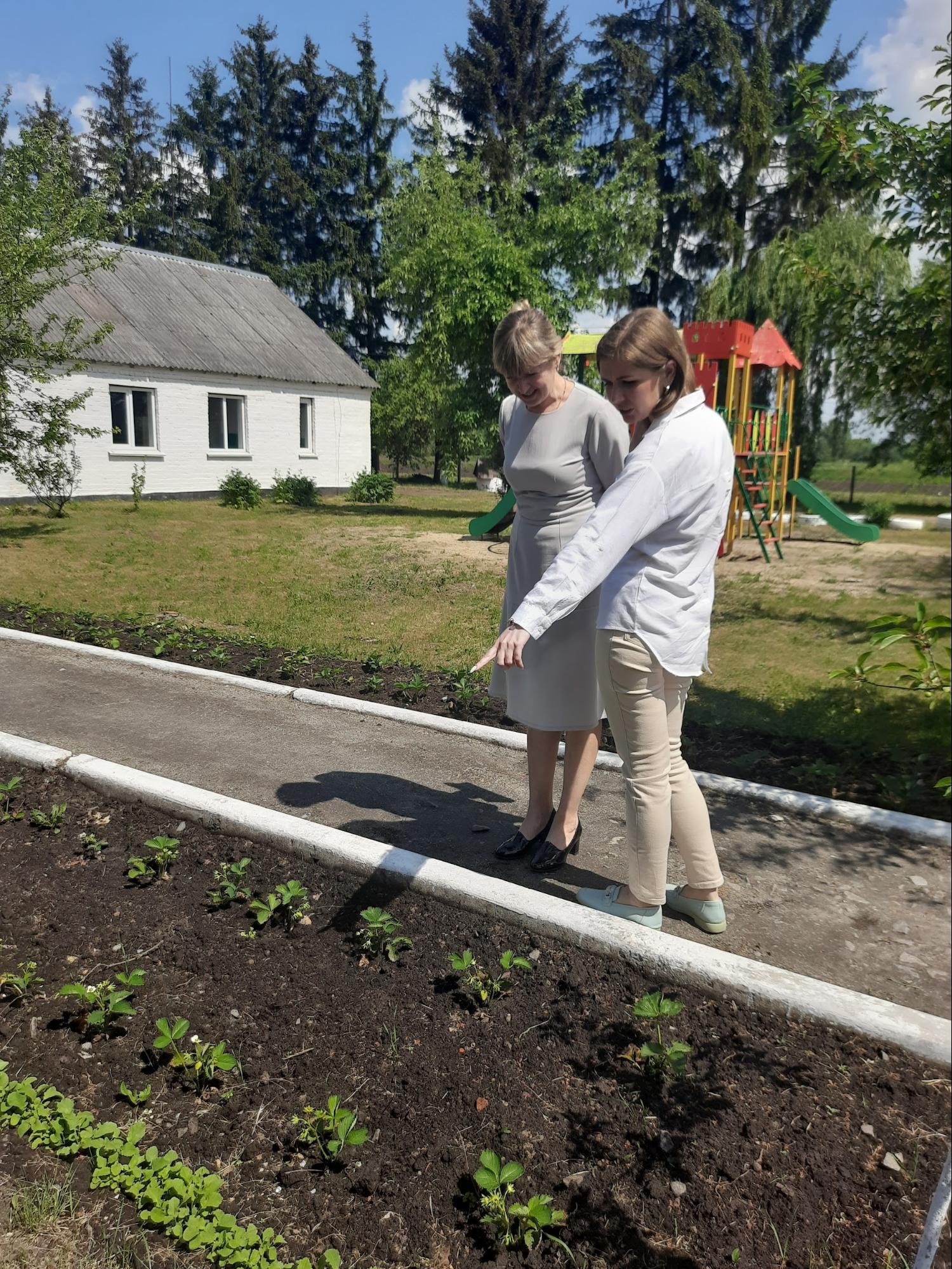
The shelter's residents and villagers planted a garden on the premises
The budget of the territorial community pays the bills for the shelter's residents' communal services. The villagers help with part of the products and bring eggs and milk.
"We don't have anyone who is indifferent. Everyone shares what they can," says Khalimovska, who herself brings homemade products to the shelter.
It is difficult to find employment because there are few jobs in the village. However, for example, Yuliya Nerutenko, who moved with her family from Bucha in the Kyiv region, became the manager of this place of compact residence, and her husband performs the duties of a director at an agricultural enterprise.
Children attend a local school and kindergarten. A playground was set up for them in the new home's yard.
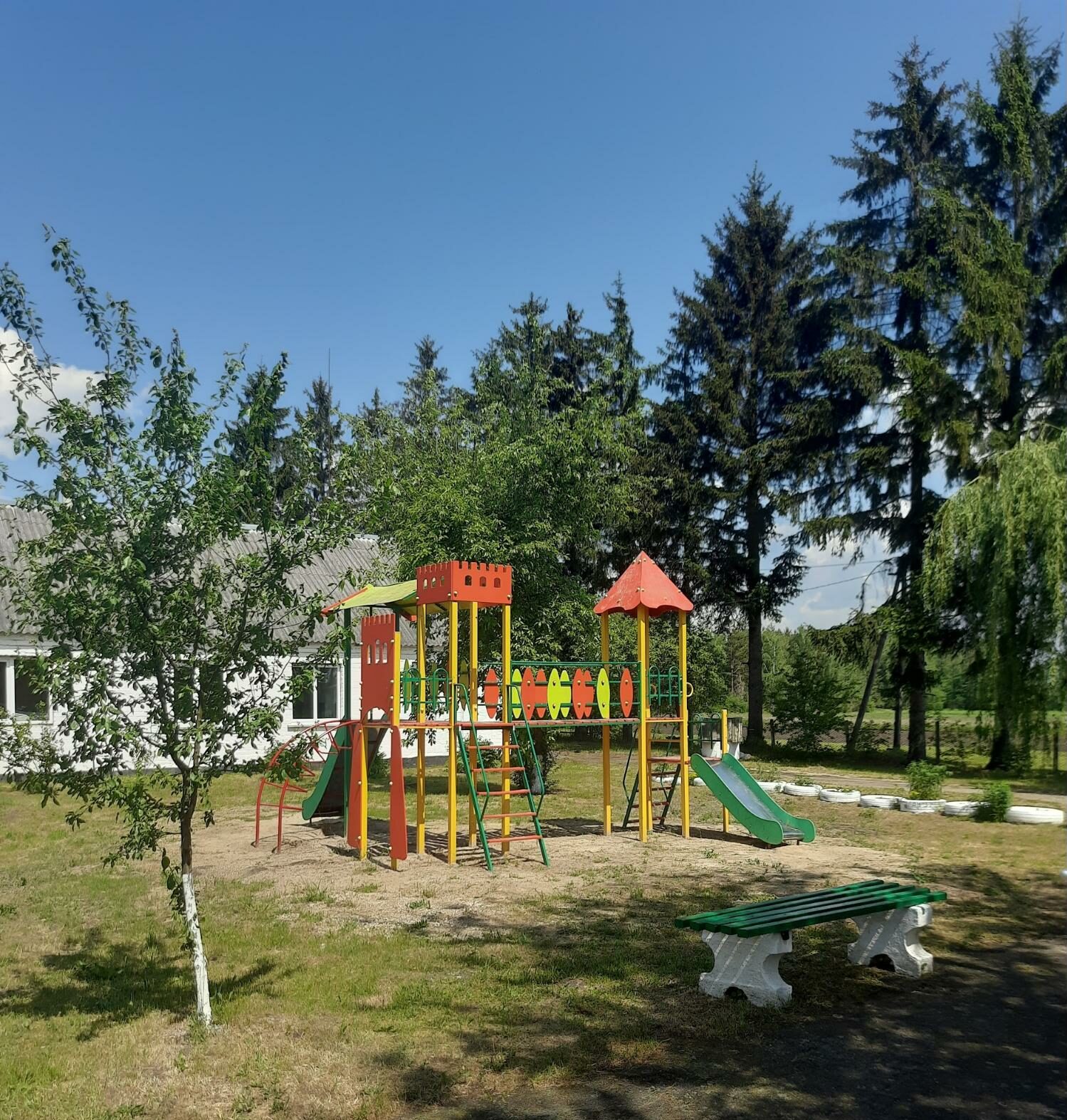
Children's playground on the territory of the shelter
The Rokada charitable foundation also helps the temporarily displaced. Kateryna Ostapenko, the coordinator of the fund in the Zhytomyr region, says that the Zhytomyr region is a transit region. People fleeing the war arrive in Zhytomyr or the region for a while and then move on to safer areas. Therefore, there are almost no places for compact living in the region. When people arrived, they were resettled in the private sector— either the head of the village was looking for an empty house, or the locals were taking them in.
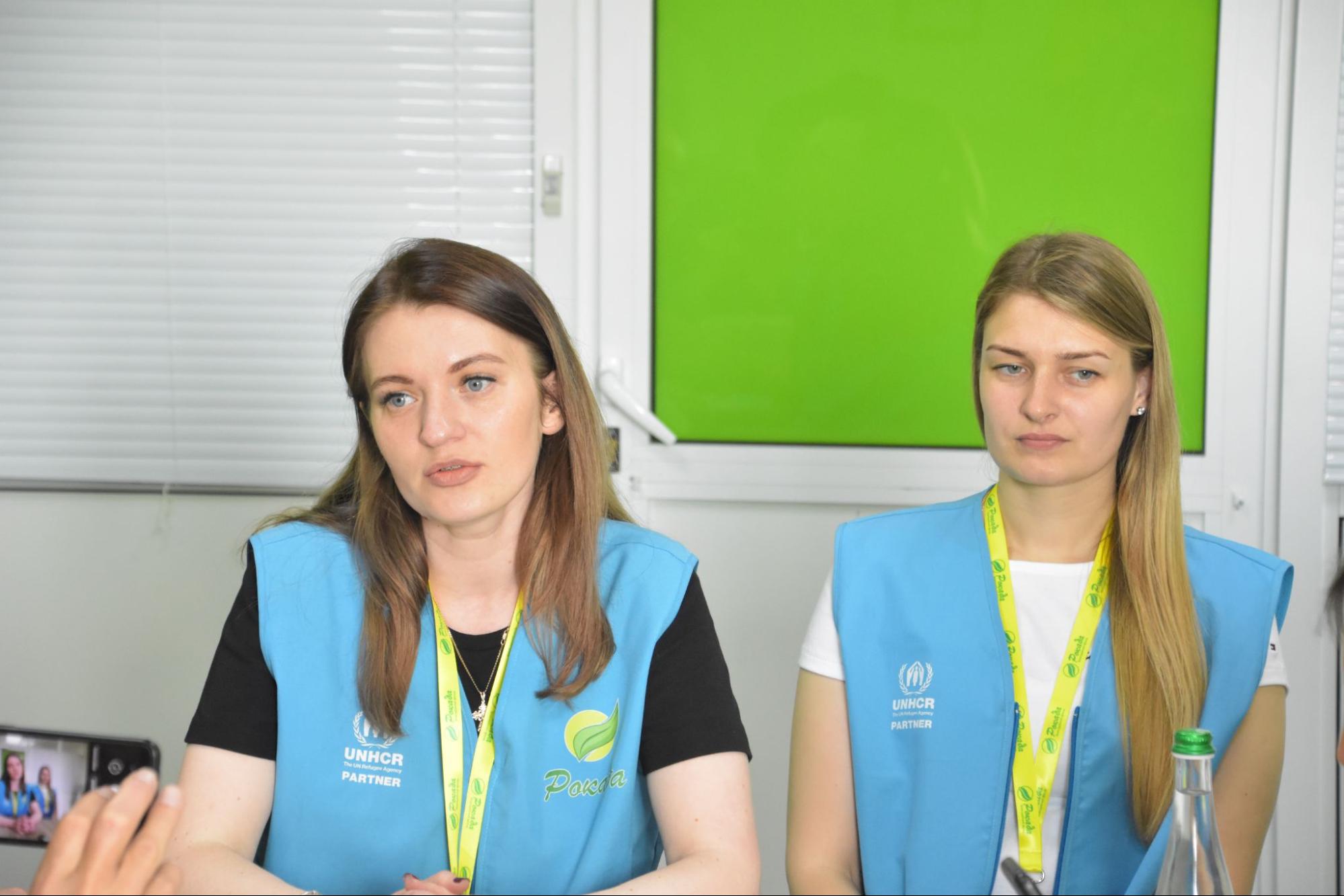
Representatives of the Rokada Charitable Foundation are speaking about the foundation's work
"People come with small bags — this is such despair and pain that it is difficult to watch," says Ostapenko. "We help with mattresses, blankets, bed linen, hygiene, and kitchen sets. These are things that will give a person at least a little comfort. We also provide psychological support, cooperate with employment centers and pension funds, and help arrange assistance. We are trying to surround people with attention to improve the situation a little."
Families have arranged a space for themselves, trying to create home comfort.


At Christmas, the IDPs caroled together around the village
Those people had everything — their own apartments, cars, shops, but there is nothing anymore. "The only thing that matters now is that we know that Ukraine is strong, Ukraine will win, Ukraine is above all," says Sanina.
Does it really work?
After the explosion of the Kakhovka hydroelectric power plant and the flooding of the Kherson region, the village of Sokoliv is ready to receive more people. The village head Khalimovska says that they can accommodate up to 30 people.
"We have already prepared places, bunk beds, cribs for babies. We are waiting. If they are willing, then we will definitely accept," says the head.
According to Vitaliy Bunechko, the head of the Zhytomyr Regional Military Administration, in May, the region received nine evacuation trains with residents of Bakhmut, Pokrovsk, and other settlements of the Donetsk region under constant shelling. It was through the Zhytomyr region that residents of the occupied settlements of the Kyiv region left. At the beginning of the full-scale invasion, more than 110,000 forcibly displaced people were in the Zhytomyr region. Currently, about 67,000 internally displaced persons live in the region, including large families and family-type orphanages.
Nowadays, during the war, many communities are faced with the arrival of many displaced people, but not all of these communities know how to cope with this challenge. Someone can do it well on their own, like the community in our material. However, if you represent a community and need advice in working with IDPs, you can contact one of the regional offices of the U-LEAD with Europe Program, which will tell you how to better integrate IDPs or how to strengthen business in your community thanks to IDPs.
This article was published as part of the Community Voices campaign, which is part of the U-LEAD with Europe Program for Ukraine on Local Empowerment, Accountability, and Development, jointly funded by the EU and its member states Germany, Poland, Sweden, Denmark, Estonia, and Slovenia to support Ukraine on its way to strengthening local self-government. U-LEAD promotes transparent, accountable, and multi-level governance in Ukraine that responds to the needs of citizens and empowers communities.


